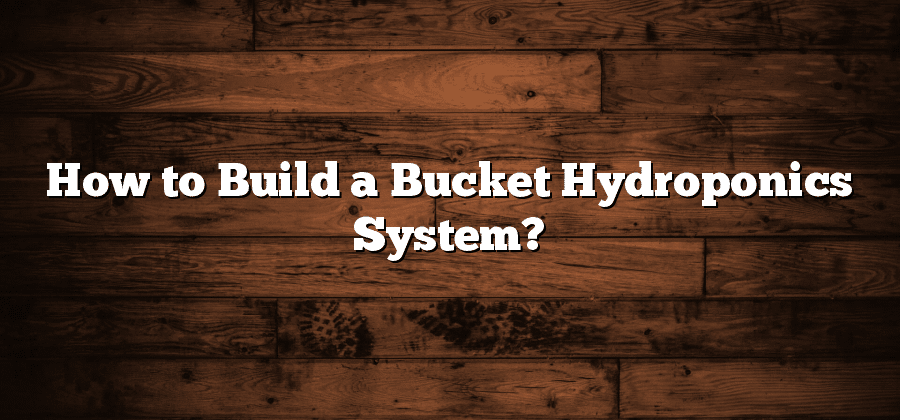Understanding the Basics of Hydroponics
Hydroponics is a modern and efficient way of growing plants without the need for soil. This method utilizes a nutrient-rich solution that delivers all the necessary minerals and elements directly to the plant’s roots. Understanding the basics of hydroponics is crucial for anyone interested in exploring this innovative approach to plant cultivation.
One key aspect of hydroponics is the ability to control the environment in which the plants grow. This control allows for precise adjustments in temperature, humidity, and lighting conditions to optimize plant growth. By eliminating the reliance on soil, hydroponics also minimizes the risk of soil-borne diseases and pests, resulting in healthier and more abundant crops. Additionally, this method requires less water compared to traditional farming techniques, making it a more sustainable option in the face of water scarcity challenges.
Selecting the Right Materials for Your System
When it comes to setting up a hydroponic system, selecting the right materials is crucial for the success of your project. One of the first things to consider is the type of growing medium you will use. Each medium has its own advantages and disadvantages, so it’s important to choose one that is best suited for the specific plants you plan to grow. Some common options include rockwool, perlite, and coco coir.
In addition to the growing medium, you will need to choose the appropriate containers for your hydroponic system. These containers can range from large buckets or bins to specialized trays or tubes. Consider the size and structure of your plants, as well as the available space in your growing area, when selecting the containers. It’s also important to ensure that the containers are durable and can withstand the weight of the plants and the nutrient solution without leaking or breaking. Investing in high-quality materials from reputable suppliers will contribute to the long-term success and efficiency of your hydroponic system.
Preparing the Bucket for Hydroponic Use
Once you have selected the perfect bucket for your hydroponic system, it’s time to prepare it for use. The first step is to clean the bucket thoroughly to remove any dirt, debris, or residue that may be present. This can be done by washing the bucket with warm water and a mild detergent, ensuring that all surfaces are being scrubbed. Rinse the bucket thoroughly to remove any soapy residue, and then allow it to air dry completely.
Next, it’s important to create drainage holes in the bottom of the bucket. These holes will allow excess water to drain out and prevent waterlogging of the plant roots. Using a drill with a small drill bit, carefully make several evenly spaced holes in the bottom of the bucket. Aim for about 4-6 holes, each around ¼ inch in diameter. Be mindful of the plastic shavings that may be generated during drilling, and make sure to clean them off before moving forward. This simple step will promote healthy root growth and prevent your plants from drowning in water.
Creating the Nutrient Solution for Your Plants
After setting up the hydroponic system and prepping the bucket for use, it’s time to create the nutrient solution that will fuel your plants’ growth. The nutrient solution is a crucial element in hydroponics as it provides the necessary nutrients for your plants to thrive.
To begin, you’ll need to gather the essential components for your nutrient solution. These typically include water, a nutrient mix or individual nutrient solutions, pH adjusters, and a measuring device. It’s important to note that the nutrient mix you choose should be tailored to the specific needs of your plant variety. Consult the instructions provided with the nutrient mix to determine the proper amount and ratio of nutrients required.
Next, fill a clean container with the appropriate amount of water. Gradually add the nutrient mix or individual nutrient solutions, carefully measuring each component according to the recommended ratios. Stir the solution thoroughly to ensure the nutrients are fully dissolved.
Once you have created the nutrient solution, it is crucial to test its pH level. Most plants thrive in a slightly acidic environment, with a pH range of 5.5 to 6.5. Use a pH testing kit to measure the acidity of your nutrient solution, and adjust it if necessary by adding pH adjusters.
Congratulations, you have successfully created a nutrient solution for your hydroponic plants. The next step is to install the irrigation system in your bucket, ensuring a consistent supply of the nutrient solution to your plants.
Installing the Irrigation System in the Bucket
One crucial aspect of a successful hydroponic system is the installation of the irrigation system in the bucket. This step ensures the continuous supply of water and nutrients to the plants, promoting their growth and development. Installing the irrigation system may seem like a daunting task at first, but with the right knowledge and materials, it can be accomplished efficiently.
To begin, gather all the necessary components for the irrigation system, including a water pump, tubing, and drip emitters. It is crucial to ensure that all the materials are of high quality and are compatible with your hydroponic setup. Once you have your materials ready, carefully attach the tubing to the water pump and connect the drip emitters at regular intervals along the tubing. Ensure that the tubing is securely fastened to prevent any leaks. Finally, submerge the water pump into the nutrient solution, making sure that it is fully submerged and functioning properly. With these steps completed, your irrigation system is installed and ready to provide your hydroponic plants with the water and nutrients they need for optimal growth.
Note: Please keep in mind that this article section is a work in progress and does not provide a complete guide on installing the irrigation system in the bucket.






